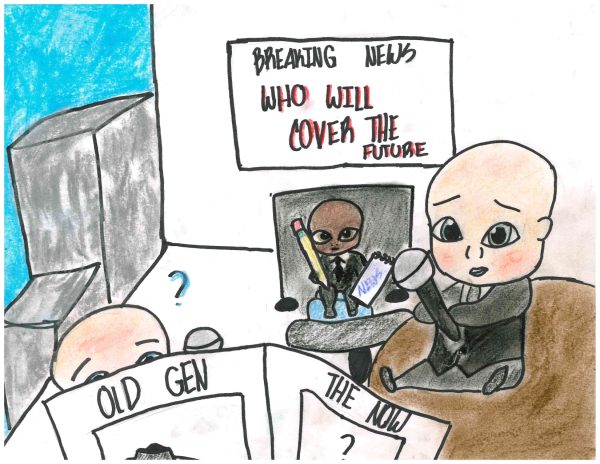UN climate change report functions as hope, warning
Standing at a little fewer than 8,000 pages, the UN climate change report, brings attention to climate change and global warming through a synthesis report in hopes of staving off the devastating impacts. The report was released on March 23 and contains research dating back to the beginning of the Paris Climate Accord.
On March 23, a sector of the United Nations (UN) called the Intergovernmental Panel on Climate Change (IPCC) released a comprehensive synthesis report detailing the causes and impacts of global warming as well as possible solutions to limit global warming and climate change. Releasing a report on global warming, the Intergovernmental Panel on Climate Change (IPCC) identified the causes and effects of climate change as well as possible
solutions. This group of documents proved to be a wake up call for me, and many others across the globe. Based on the report’s findings, climate
change is a dire issue that needs to be met with immediate countermeasures because time is running out to fix the damage humans have caused. The issue primarily focused on in the report is the speedily increasing global temperature. The report indicates that the global temperature has already risen around 1.1 degrees Celsius (2 degrees Fahrenheit), and the scientists who contributed to the report emphasize that increasing above 1.5 degrees Celsius will bring with it a cascade of problems. One of the issues highlighted was the rising sea level which features two main impacts. Multiple species have gone extinct due to the higher sea level completely submerging their habitats. Secondly, higher temperatures strengthen storms and, when combined with the raised sea level, intensify the flooding that results from the storms. The report also indicates that there are other types of weather events impacted by climate change, including heat waves, droughts and hurricanes. Climate change has allowed these events to grow in severity and frequency. To make matters worse, the report stipulates that the most vulnerable locations to extreme weather events are both the
“world’s poorest countries” and “low-lying island nations.” These nations contribute to less than 1% of the pollutants that cause global warming, but together they hold around one billion people. This goes to show that the people primarily suffering are not even the ones who have exacerbated global warming in the first place. On top of extreme weather, many low-lying island nations also utilize glaciers as a source of freshwater, but they are essentially guaranteed to be afflicted by freshwater shortages as the glaciers may melt when the global temperature increase goes beyond 1.5 degrees Celsius. In accordance with the report, the melting glaciers are classified as a “limit” to the adaptation of the human race. The report defines these limits as both “soft” and “hard,” with soft defined as “shortcomings in political and social systems” and hard meaning relatively impossible to adapt to. The climate report dictates that some hard limits include temperatures rising to heights that can no longer support staple crops growth and water-conservation-resistant droughts. While it does detail many catastrophes, the IPCC’s report does more than condemn humanity, it offers ways to save it. Those ways include a mixture of decarbonization across all industries and removing current carbon from the air. Carbon emissions are the leading contributor to global warming, so getting rid of planet-warming carbon sources could allow the Earth to remain at 1.5 degrees Celsius and not above it. To reach even a 50% chance at stopping global warming at 1.5 degrees Celsius, we would have to cut greenhouse gas emissions in half by 2030 and avoid adding any more carbon dioxide into the atmosphere by around 2053. Most carbon-removing technologies are very new, meaning that we cannot rely on them solely. Some of these technologies work by depositing carbon from the atmosphere into the ground and soil. At the end of the day, our climate crisis is still being propelled forward as present in the report. Additionally, this report was released before China came out with plans for a new coal plant as well as before President Biden sign the Willow Project. Despite vowing to cut emissions, both China and America will now be contributing to them at greater lengths. The Willow Project alone is set to release around 70 million metric tons of carbon dioxide. The issues of climate change and global warming are no longer thoughts for the future. They are present day problems that require immediate action. “The pace and scale of what has been done so far and current plans are insufficient to tackle climate change,” IPCC chair Hoesung Lee said in a released statement. “We are walking when we should be sprinting.”






